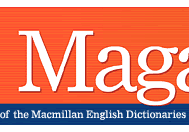|

FROM THE EDITOR
 In
this Issue In
this Issue
 Contributors Contributors
 Letters
to the Editor Letters
to the Editor
 Write
to Us Write
to Us
 Spread
the Word Spread
the Word
 Back
Issues Back
Issues
 Index Index
FEATURE
 Trends
in English Language Trends
in English Language
Teaching Today
COLUMNS
 Metaphor Metaphor
What we talk about
when we talk about
anger
 Focus
on Language Focus
on Language
Study:
Introduction
Pronunciation
Sounds, words and
word linking
UK version ¦
US version
 New
word of the month New
word of the month
New blends in
entertainment
 Top
Tips for the CD-ROMs Top
Tips for the CD-ROMs
SoundSearch for
pronunciation practice
 onestopenglish.com onestopenglish.com
|
 |
by Michael
Vaughan-Rees
•
Transcription
• The Schwa Sound
• Stress
• Primary and Secondary Stress
• Making Sure That People
Understand You When You Speak
• Understanding Native
Speakers
Transcription
The words in the Macmillan Essential Dictionary are
followed by a transcription to show the pronunciation:
| • |
come /k m/,
home /ho m/,
home /ho m/ m/ |
Often the number of symbols in the transcription
will be different from the number of letters in the written word.
This is because symbols in a transcription represent the sounds
rather than the letters.
Written letters may correspond to a number of different
sounds – or to no sound at all! But symbols always represent the
same sound. Look at the following groups of words. They all contain the
same vowel sound – but the spelling is different:
| • |
come /k m/,
sum /s m/,
sum /s m/,
dumb /d m/,
dumb /d m/ m/ |
| • |
home /ho m/,
roam /ro m/,
roam /ro m/,
comb /ko m/,
comb /ko m/ m/ |
Some symbols are familiar and easy to recognise, for example,
/p, b, t, d, k, g, f
/. Others are less easy. The 'ng' sound in words
such as song /s  /
and thing / /
and thing /   /
is represented by the single symbol /
is represented by the single symbol  .
And the symbols for "th" show that this pair of letters can
cover two different sounds. Compare: .
And the symbols for "th" show that this pair of letters can
cover two different sounds. Compare:
top
The
Schwa Sound / / /
The schwa represents the most common sound in English.
It is the first sound in above /  b b v/
and the last sound in pizza / v/
and the last sound in pizza / pits pits /.
In fact, almost any written vowel can, when unstressed, be sounded as
a schwa: /.
In fact, almost any written vowel can, when unstressed, be sounded as
a schwa:
| • |
allow /  la la /,
perform /p /,
perform /p  f f rm/,
commit /k rm/,
commit /k  m m t/,
supply /s t/,
supply /s  pla pla / / |
top
Stress
Both above /  b b v/
and pizza / v/
and pizza / pits pits /
have two syllables. But they are different in terms of the relative
importance of the syllables. In above the first syllable is relatively
short and weak, while the second syllable is relatively strong and long.
In pizza, by contrast, it is the first syllable that is relatively
strong and long. In other words, the first syllable in pizza is
stressed, and we indicate this in the dictionary by using the symbol
/ /
have two syllables. But they are different in terms of the relative
importance of the syllables. In above the first syllable is relatively
short and weak, while the second syllable is relatively strong and long.
In pizza, by contrast, it is the first syllable that is relatively
strong and long. In other words, the first syllable in pizza is
stressed, and we indicate this in the dictionary by using the symbol
/ / directly before
the stressed syllable. You can imagine these two words written as aBOVE
and PIzza. / directly before
the stressed syllable. You can imagine these two words written as aBOVE
and PIzza.
It is useful to know that:
| • |
most two-syllable nouns and adjectives have front
stress (the first syllable is stressed): FLOWer, LITTle, VILLage,
PREtty, BOdy, FOrest etc. |
| • |
most two-syllable verbs have end stress (the
second syllable is stressed): forGIVE, aLLOW, coMMIT etc. |
It is worth checking the pronunciation in the dictionary,
especially if a two-syllable word can be both a noun and a verb. In such
cases one of two things can happen:
| • |
either there is no change in the pronunciation
or in the stress, for example: reply /r  pla pla /,
damage / /,
damage / d d m m d d /,
and wonder / /,
and wonder / w w nd nd / / |
| • |
or the written form stays the same, but the
stress changes, often causing a change in the vowel sound: compare:
permit (noun) / p p rm rm t/
and permit (verb) /p t/
and permit (verb) /p r r m m t/ t/
record (noun) / rek rek rd/
and record (verb) /r rd/
and record (verb) /r  k k rd/ rd/
import (noun) /  mp mp rt/
and import (verb) / rt/
and import (verb) / m m p p rt/ rt/ |
top
Primary
and Secondary Stress
In words of three or more syllables, there are sometimes
two levels of stress: primary and secondary. When this happens,
we use the symbol / /
before the secondary stressed syllable. Look at the examples for satisfaction
and pronunciation in the table below. /
before the secondary stressed syllable. Look at the examples for satisfaction
and pronunciation in the table below.
| j |
|
weak
|
secondary
|
weak
|
primary
|
weak
|
| j |
|
o |
o |
o |
o |
o |
|
station
|
|
l |
l |
l |
STA |
tion |
|
reaction
|
|
l |
l |
re |
AC |
tion |
|
satisfaction
|
|
l |
SA |
tis |
FAC |
tion |
|
pronunciation
|
|
pro |
NUN |
ci |
A |
tion |
top
Making
Sure That People Understand You When You Speak
If you want to be easily understood, then the first thing
to do is to make sure that your consonant sounds are as clear and
accurate as possible.
In the case of vowel sounds, you should pay special
attention to the group of vowels known as diphthongs,
are indicated by double symbols, for example:
| • |
day /de /,
nice /na /,
nice /na s/,
boy /b s/,
boy /b  /,
go /go /,
go /go / / |
In all of these the tongue moves from one position to
another as the vowel sound continues.
You should also make sure that your word stress
is as accurate as possible. You will see that the dictionary shows the
stress patterns of compound words and phrasal verbs, for example:
top
Understanding
Native Speakers
The dictionary shows the pronunciations of words spoken
in their slow, careful form. But in normal rapid speech, this changes,
particularly in the following ways:
It is sometimes difficult
to hear when one word ends and the next begins. Here are examples of the
four main types of word linking.
| • |
an apple sounds like a napple |
| • |
two apples sounds like two wapples
|
| • |
three apples
sounds like three yapples
|
| • |
four apples sounds like four rapples |
The schwa can disappear
between certain consonants. This means that support
/s  p p rt/
may sound like sport /sp rt/
may sound like sport /sp rt/
and parade rt/
and parade
/p  re re d/
like prayed /pre d/
like prayed /pre d/.
The consonants /t/ and /d/ may disappear when found between
two other consonants. So facts may sound like fax and friendly
like frienly. d/.
The consonants /t/ and /d/ may disappear when found between
two other consonants. So facts may sound like fax and friendly
like frienly.
If you see a symbol in brackets in this dictionary (as in / ste ste  ( ( )n/
or )n/
or
/ fren(d)li/), it
means that the sound may disappear in normal rapid speech. fren(d)li/), it
means that the sound may disappear in normal rapid speech.
Finally, consonants
may change to make it easier to produce the next sound. Sometimes words
change permanently, as with handkerchief where the /d/ has
disappeared completely and it now sounds like hangkerchief. Other
words change when spoken fast, such as handbag which is on its
way to sounding permanently like hambag.
top
|





